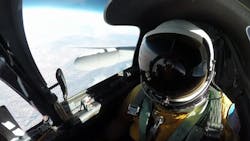High-altitude aircraft use NASA sensors to hunt for minerals
WASHINGTON - If not for the Joshua trees, the tan hills of Cuprite, Nevada, would resemble Mars. Scalded and chemically altered by water from deep underground, the rocks here are earthly analogs for understanding ancient Martian geology. The hills are also rich with minerals. They’ve lured prospectors for more than 100 years and made Cuprite an ideal place to test NASA technology designed to map the minerals, craters, crusts, and ices of our solar system, Sally Younger writes for NASA. Continue reading original article.
The Military & Aerospace Electronics take:
14 July 2025 - At the heart of this effort is a powerful remote sensing technology known as imaging spectroscopy, originally developed at NASA’s Jet Propulsion Laboratory (JPL). These instruments detect the unique molecular "fingerprints" of materials by capturing how they reflect and absorb light across more than 200 spectral bands, far beyond the capabilities of conventional cameras.
Central to GEMx are two spectrometers: the long-serving AVIRIS-Classic and its next-generation successor, AVIRIS-5. Flying aboard NASA's ER-2 aircraft at 60,000 feet, these instruments scan vast terrain with extreme precision - AVIRIS-5 can resolve features down to less than a foot. This capability enables scientists to pinpoint potential domestic sources of vital minerals like lithium and rare earth elements, which are crucial for clean energy, defense, and electronics.
Related: NASA seeks industry support for aerocapture demo mission in Earth orbit
Related: U.S. Army awards Electra contract to develop hybrid-electric aircraft tech
Jamie Whitney, Senior Editor
Military + Aerospace Electronics
